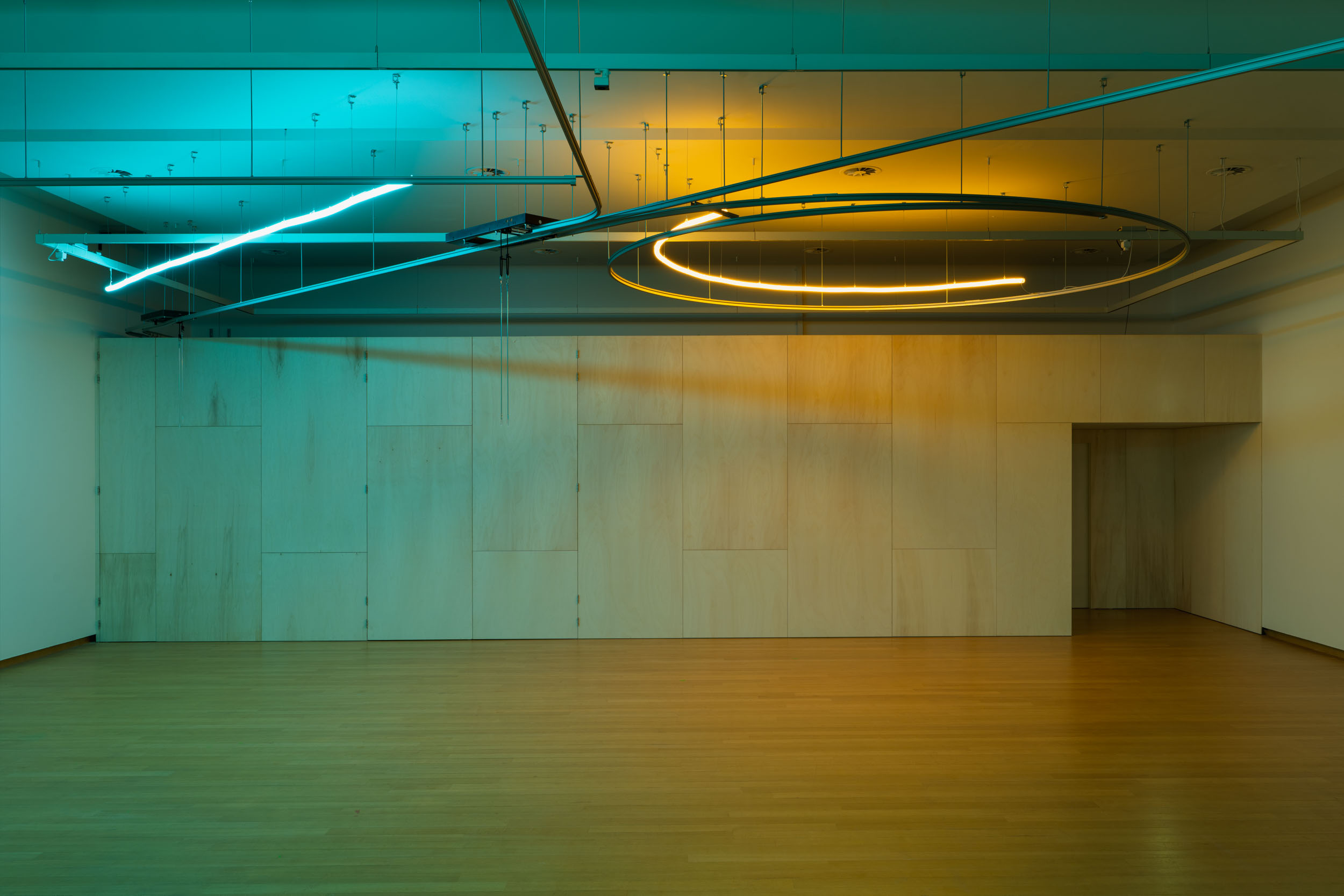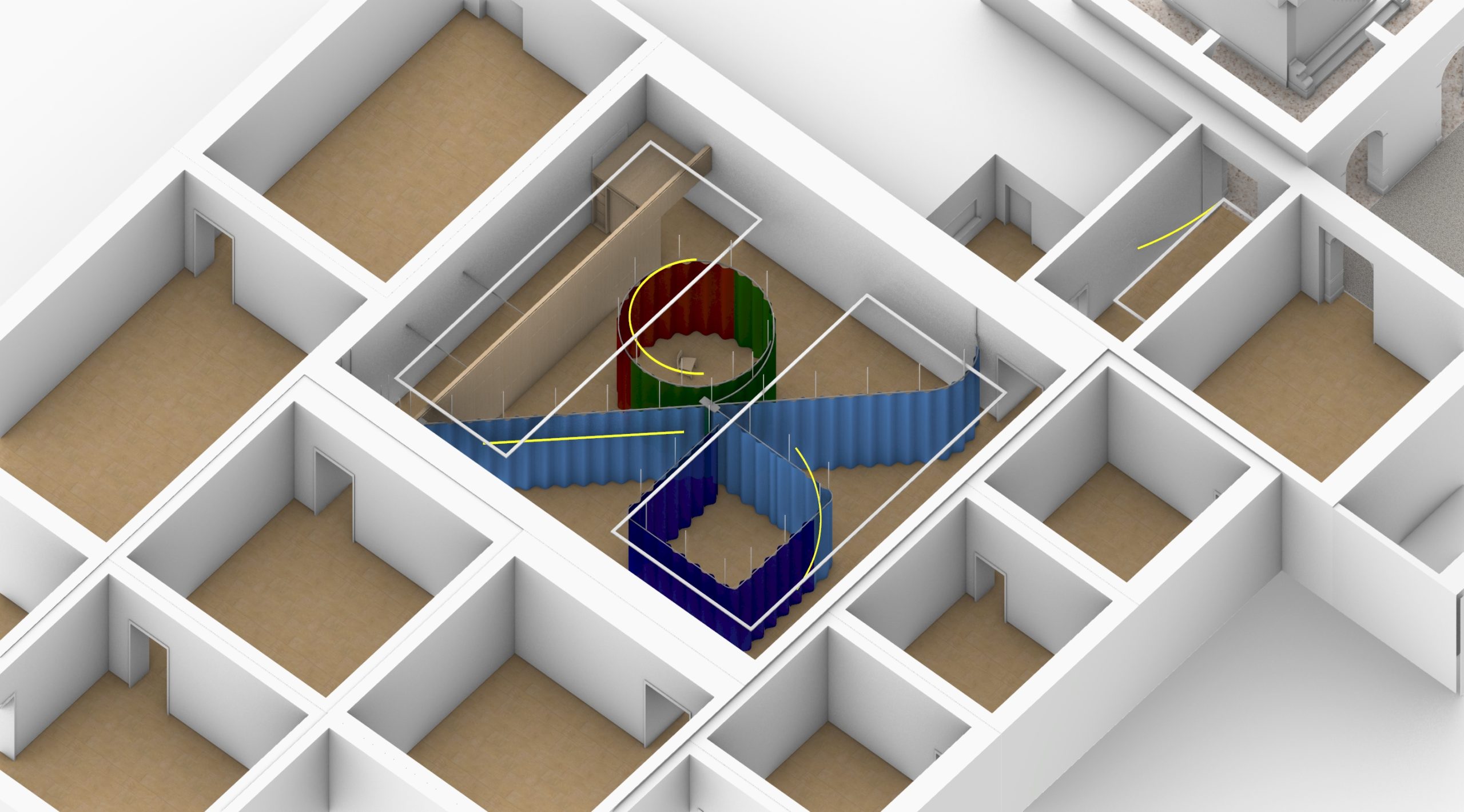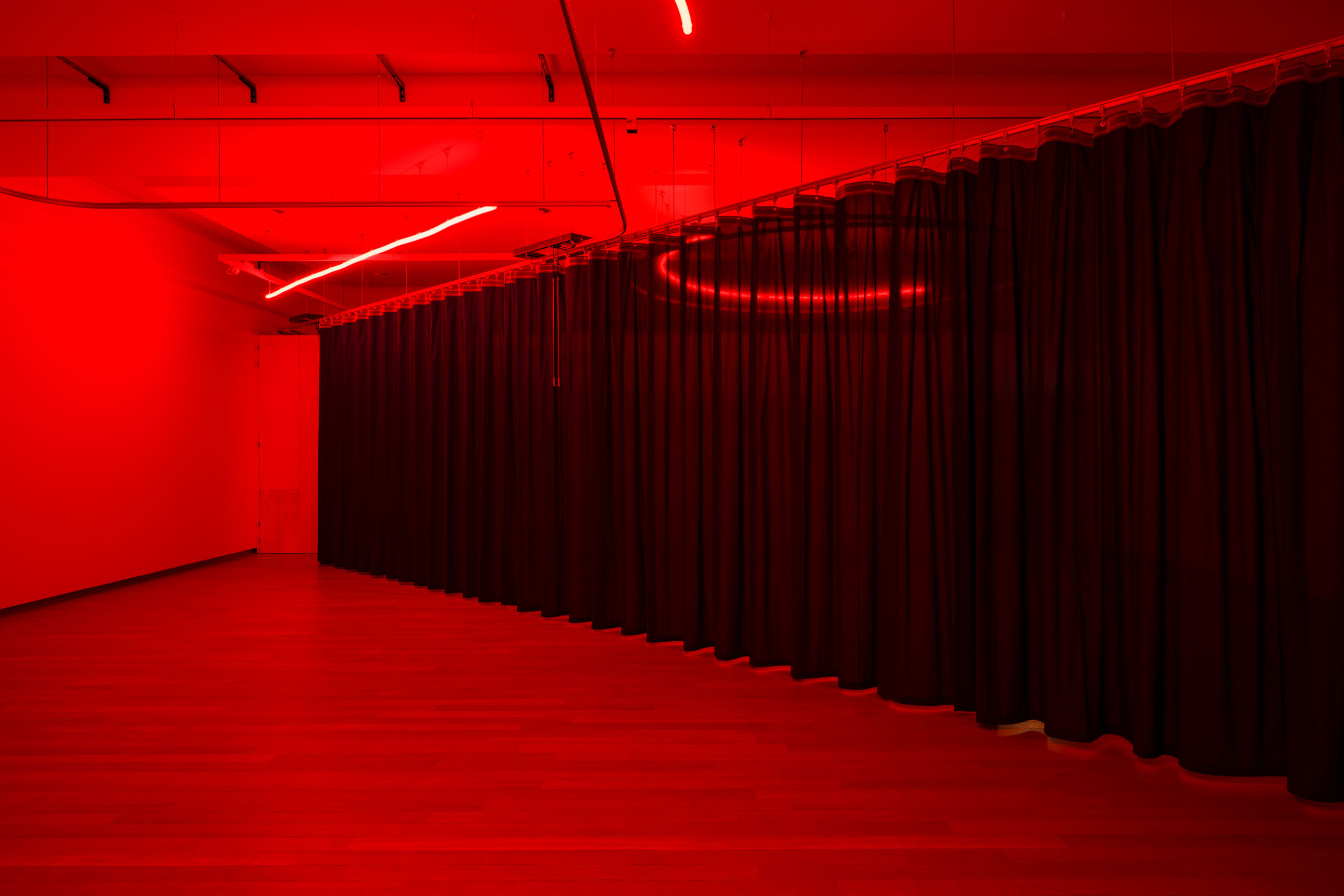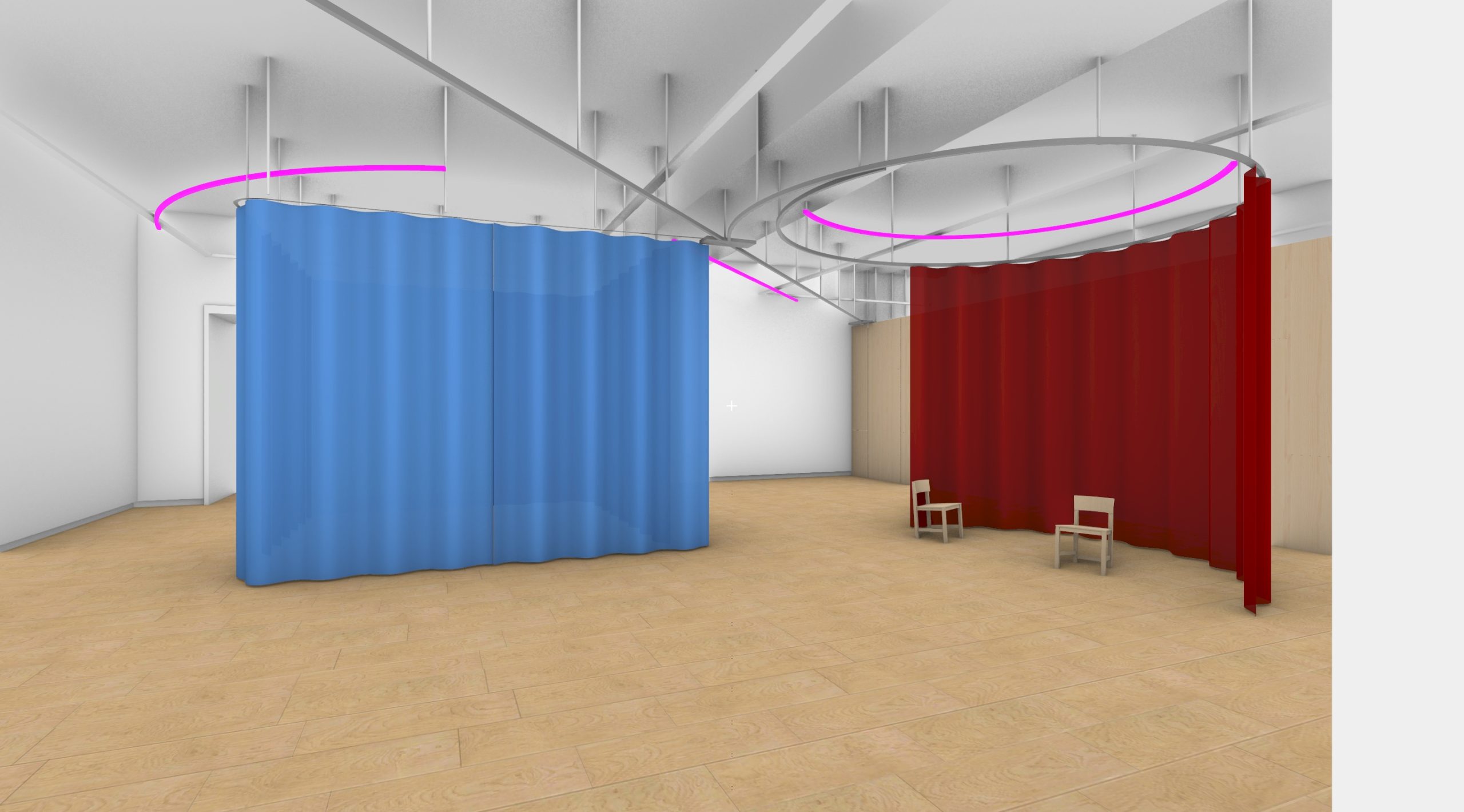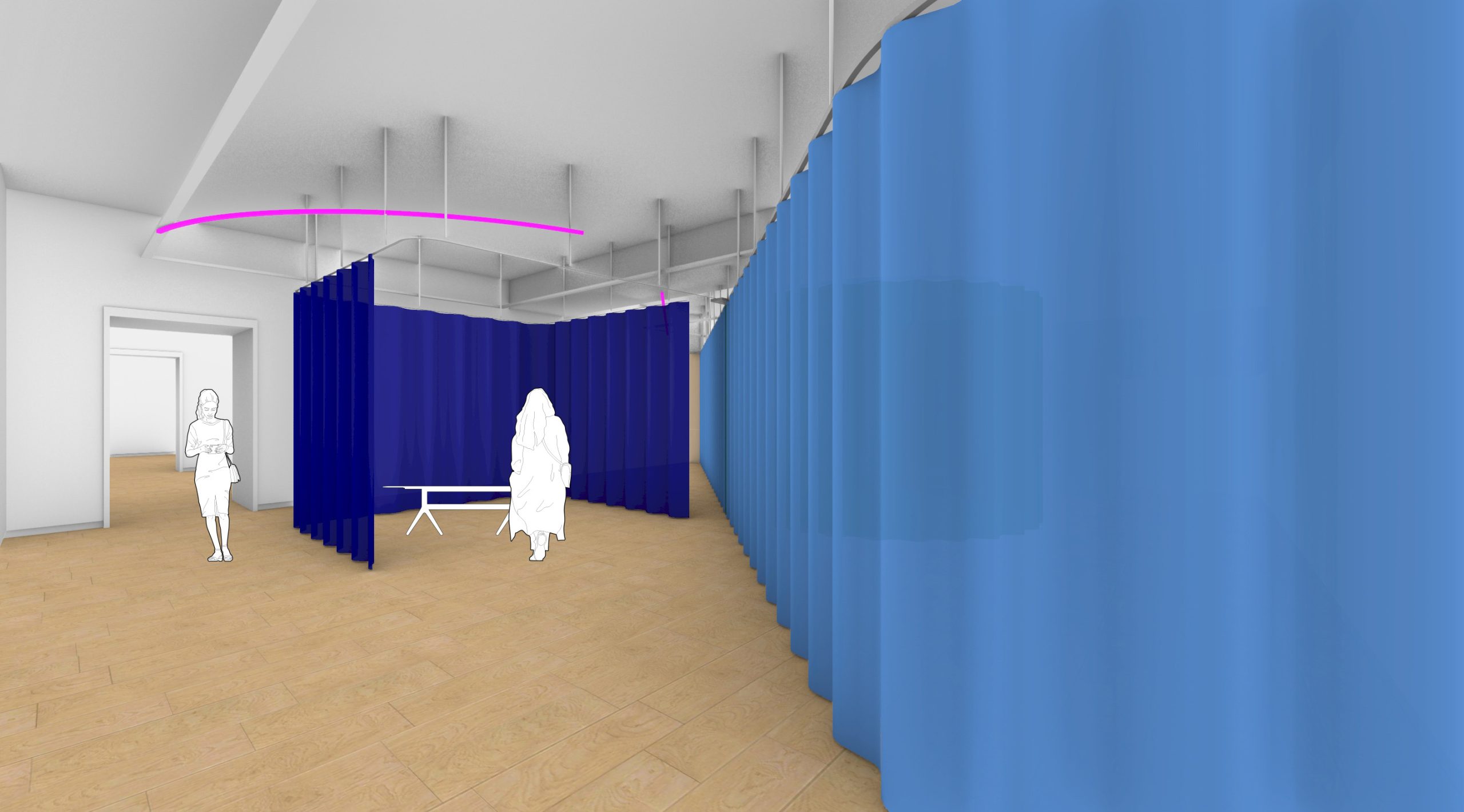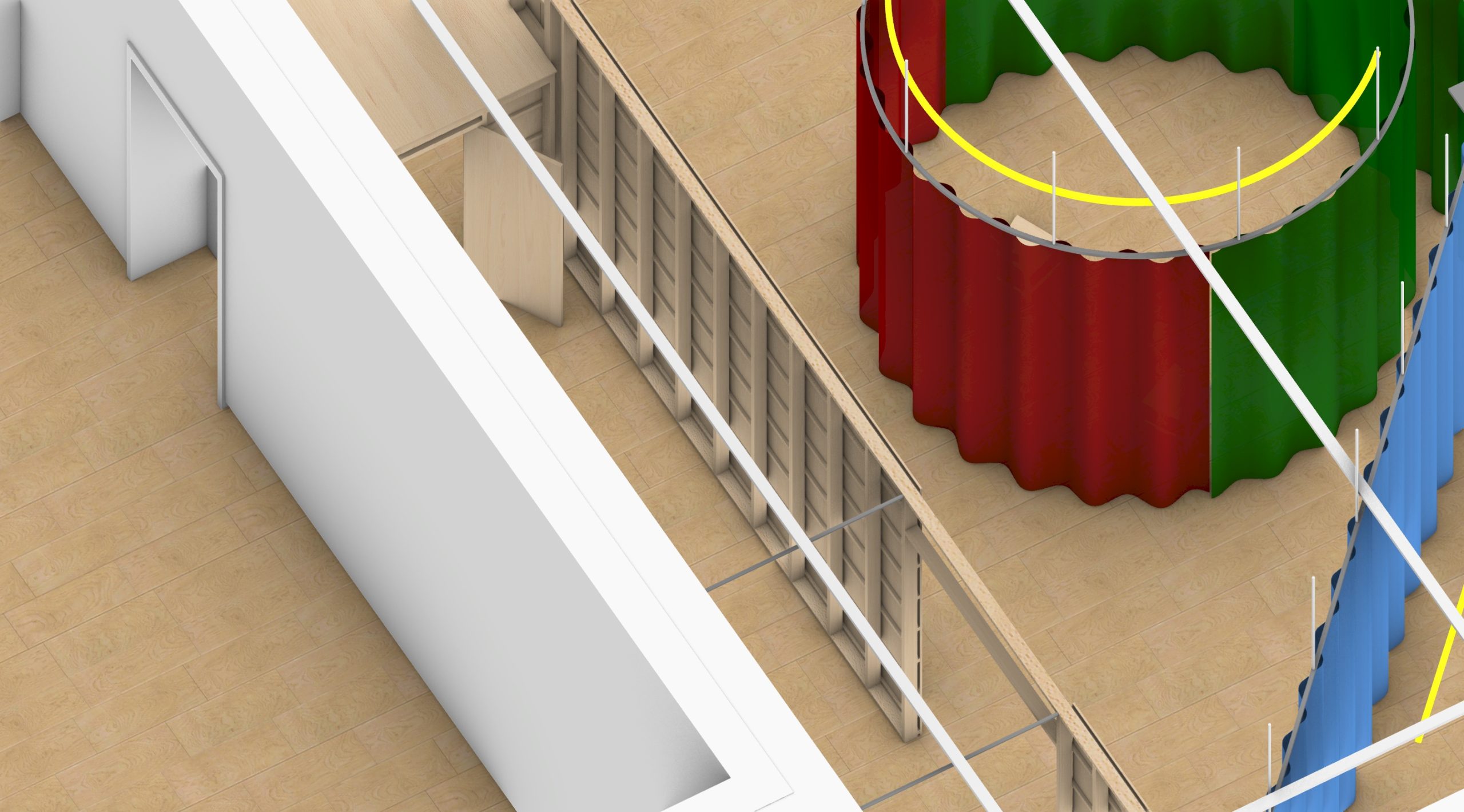Interiors Central Space and Studio Space – Buro Stedelijk (2023)
Interior design and concept: Setareh Noorani. Team: Setareh Noorani and Jelmer Teunissen.
Interior Design for the new art institution Buro Stedelijk (to hold various ‘manifestations’ as well as office capacity).
Selected manifestations/readings:
Manifestation #1: Listening Session, on the interior design concept
Buro Stedelijk website
De Groene – Uit de Ruïnes
(EN)
Taken from the Listening Sessions offering on the interior design concept
Rehearsing institutional de-scripting / Machine for manifestations, as presented by Setareh Noorani
We often think about the structures that uphold our routines, especially those inherited from wanted/unwanted lineages.
Avery F. Gordon: “Haunting is one way in which abusive systems of power make themselves known and their impacts felt in everyday life”
These scripts are sanctioned by the political and economic systems (capitalism and neoliberalism as examples) we are subjected to, of which the spatial enactment of these scripts should be of our econcern. The general unavailability of affordable housing, the antithetic responses to the commons as a resource (instead of the nuclear family bond), the exhaustive system of funding competition, and the extraction of labour and creativity by the cultural capital cycles are only some examples. These are furthermore intersected with severe control of the body – from redlining to behavioural controls in public spaces like museums.
It is therefore important to foreground acts of dismantling in design, architectural, and art practices. I situate the practice I seek to establish heavily within a discourse of intersectional feminist, queer, and abolitionist thinkers. Recognising strands of a granular future becomes a drive, one in which parity and autonomy within a culture of commonality are ubiquitous.
In this brief offering during the Listening Sessions, I would like to both re-turn to interventions or gestures from previous projects (following Karen Barad’s re-turning of study), and show how Buro Stedelijk offers a new thread to braid further an enacted critique of the systems that do not serve us anymore.
A couple of these suggestions that I continue to unpack in Buro Stedelijk are:
Tools and surfaces: as enabling constraints. Objects, spaces, grounds, protocols that make an affective response possible and allow us to act on our environment.
Acts of ‘deconstructing the white cube’, to offer ways of looking, feeling, moving through spaces adverse to traditional ‘museal’ scripts
The Tool Shed, as a generative, public space, enabling the neighbourly borrowing of tools, and making together
The (not) In-Between (Moten): blackness lived as “some kind of not-in-between suspension”, the cut, the revolutionary moment (not) in-between, the future in plain sight
The case of Buro Stedelijk brings a very interesting prompt of contemplating these elements of practice. Buro Stedelijk grapples with questions of legacy, an announced birth, and a horizon signalling its death, decommissioning or departure. It’s surrounded with spectres (of power), remains and residuals of actions, intentions, and agreements. Buro Stedelijk wants to open up, and observes its time as one actively thinking through and with temporality and decay. Its location, still intertwined with Stedelijk Museum Amsterdam, also fuses it with specific forms of public scrutiny – the (un)wanted display, the urge to attract. The will to let in different constituencies, from local to global, including audiences that probably felt less inclined to set foot in this building.
What does it mean to institute oneself while remaining in the self-sanctioned act of dismantling? How to make temporality an asset, while affirming and asserting one’s place? As an institution, how to consent not to be a single being (Moten and Glissant) and embrace its complexity and serendipity of existence?
Buro Stedelijk is building an institution, while breaking it down. It aims to use the Master’s Tools and re-tool them to their and others’ own convenience. Is such an act even possible? In a gesture of opening oneself up, negotiating the glass doors, security, and fencing, Buro Stedelijk also has the spatial potential to reconsider what it means to have the Master’s tools on display? What does it mean to have access and to be able to build (together)? What does it mean to store and to reuse?
These conditions for these Master’s tools, the spatial scripts of the institution, can and must be deconstructed. In other assignments I asked, what does it mean to deconstruct the white cube. Here the same is considered, but through the acts of layering materials, exploring intersections, dissonance and multiplied interventions – to be able to resound the many faces of Buro Stedelijk. The proposal is open-ended and as such calls for reciprocity and continued engagement.
The design as intervention between permanence / impermanence sits with the grid as a fluid entity.
Then elements come in, that offer a first set of gestures, on which affects, relationships to the space can be made explicit. These are the rails, the curtains, the storage/backstage room, and the lighting system.
After this initial phase, a certain set of ‘understandings’ or ‘offerings’ are made, establishing further negotiated, facilitative surfaces and tools. These inherently need to be durable, easy-to-assemble (with help of a builder), to store in the storage space, easy-to-adapt and ultimately also to disassemble. Buro Stedelijk could also choose to commission certain elements to other designers, based on an initial understanding of facilitation in the institution. This will be a next step in the design proposal.
Deconstructing the white cube at this point did not mean painting entire surfaces, but offering fabrics as variable tints for the spaces. For the initial phase, we reused fabrics from an earlier exhibition we had worked on at the Stedelijk Museum – cutting costs, as well as suggesting flexible details and room to grow in the future.
Deconstructing the ‘script’ means exploring ways of expanding the programme and (un)intended gathering. What are the many ways to hang out and engage with the manifestations?
